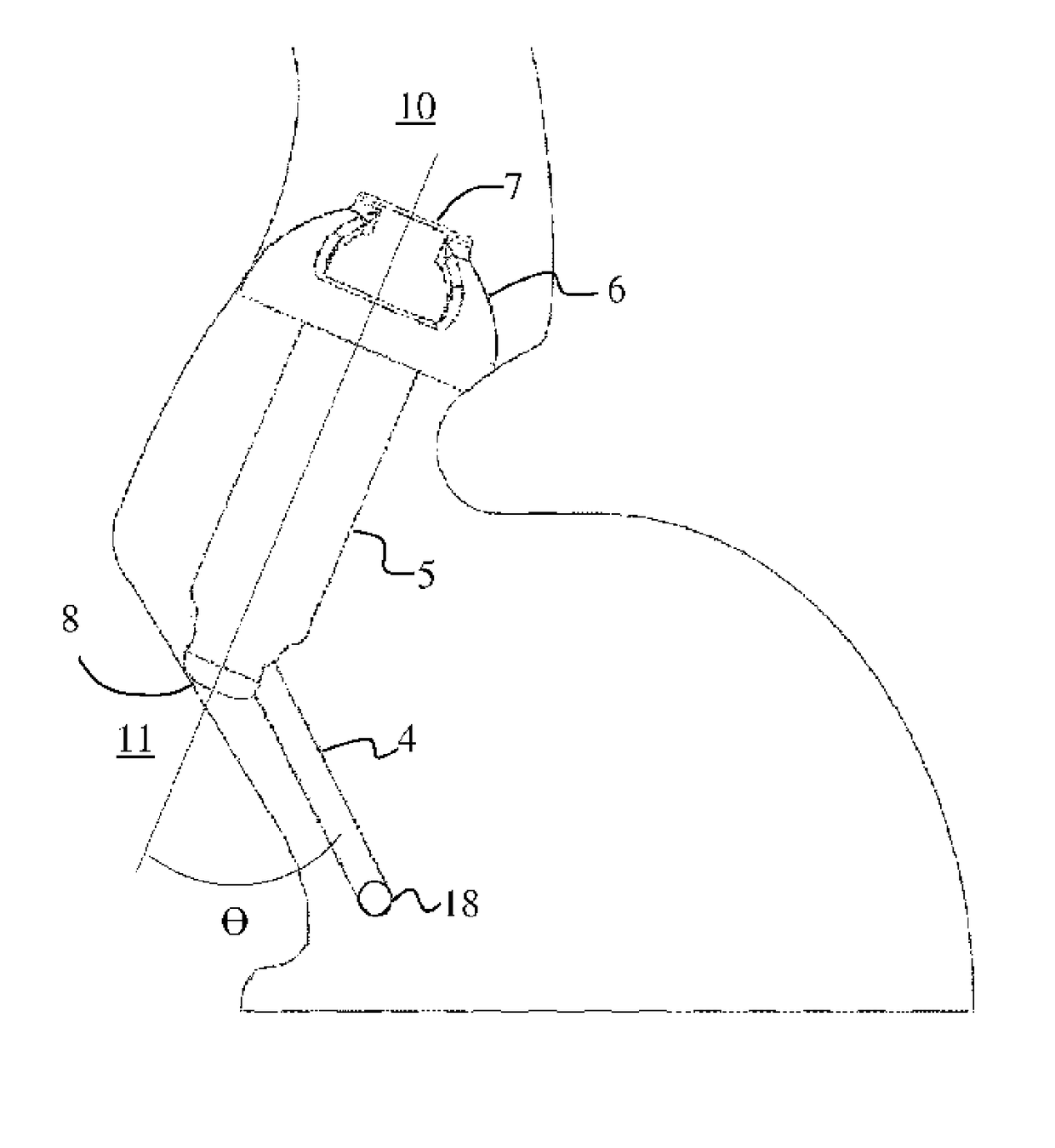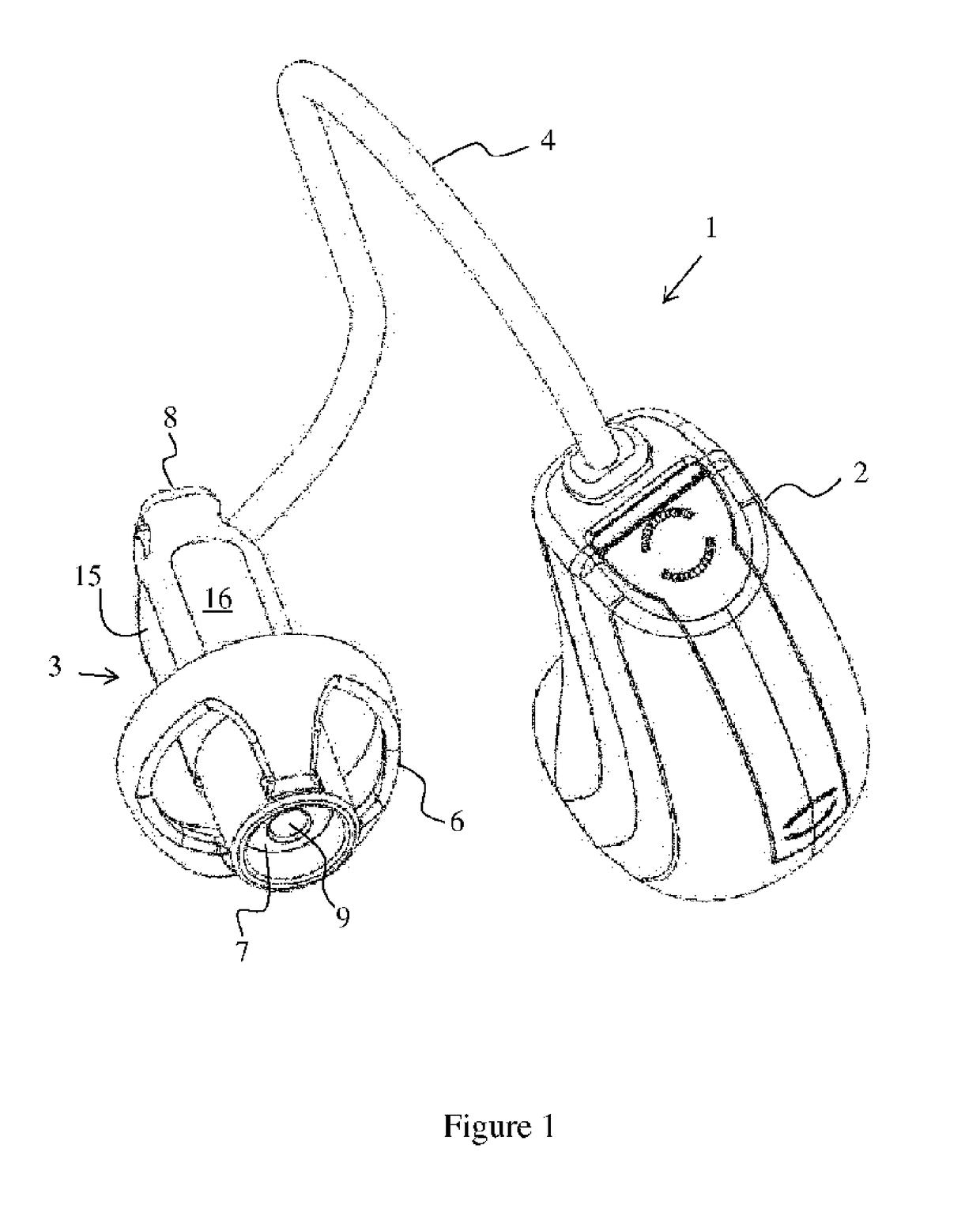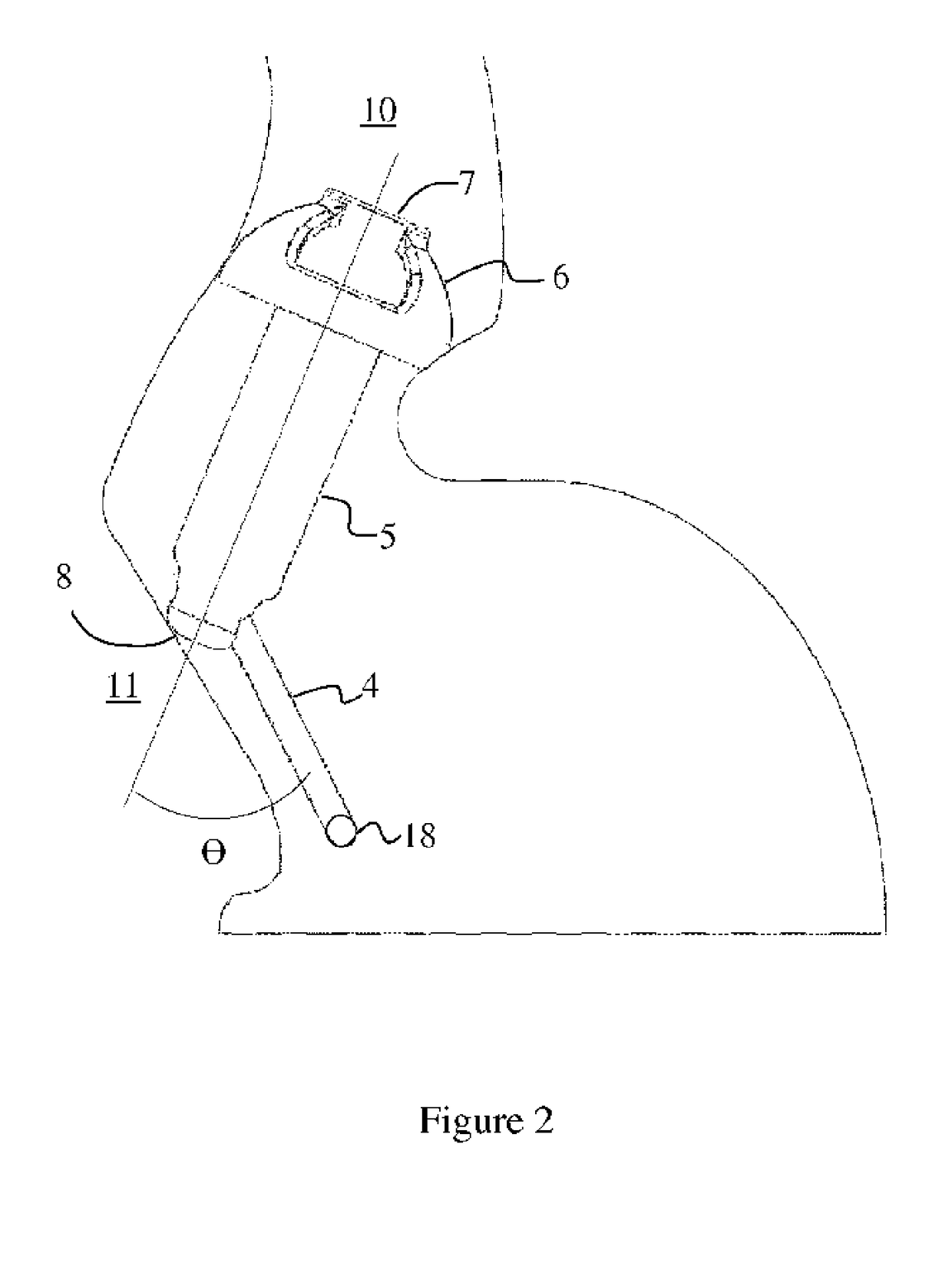Behind the ear hearing aid
a hearing aid and earpiece technology, applied in the field of hearing aids, can solve the problems of difficult to obtain this close contact between the connection and the outer ear, more visible, and annoying to wear hearing aids, and achieve the effect of facilitating cost savings and less visibl
- Summary
- Abstract
- Description
- Claims
- Application Information
AI Technical Summary
Benefits of technology
Problems solved by technology
Method used
Image
Examples
Embodiment Construction
[0032]FIG. 1 shows a hearing aid 1 with a behind-the-ear part 2 and an in-the-ear part 3. The in-the-ear part 3 is here illustrated as a receiver 5 provided with an instant fit ear plug 6. It could also have been a custom fit ear mold. Sound from the receiver will pass through an opening 9 in the first end 7 of the in-the-ear part 3. The second end 8 of the in-the-ear part 3 is preferably smooth or substantially smooth without protrusions or indentations. Preferably there are also no sharp edges in the transition from the end 8 to the side walls 15, 16.
[0033]The connecting part 4 connecting the behind-the-ear part 2 and the in-the-ear part 3 will comprise electrical cables when the in-the-ear part 3 comprises a receiver 5. In case the receiver was arranged in the behind-the-ear part 2 the connecting part 4 would be a sound tube. In both cases the connecting part may be detachably attached or fixedly attached to the in-the-ear part 3. In case the in-the-ear part comprises a receiver ...
PUM
 Login to View More
Login to View More Abstract
Description
Claims
Application Information
 Login to View More
Login to View More - R&D
- Intellectual Property
- Life Sciences
- Materials
- Tech Scout
- Unparalleled Data Quality
- Higher Quality Content
- 60% Fewer Hallucinations
Browse by: Latest US Patents, China's latest patents, Technical Efficacy Thesaurus, Application Domain, Technology Topic, Popular Technical Reports.
© 2025 PatSnap. All rights reserved.Legal|Privacy policy|Modern Slavery Act Transparency Statement|Sitemap|About US| Contact US: help@patsnap.com



